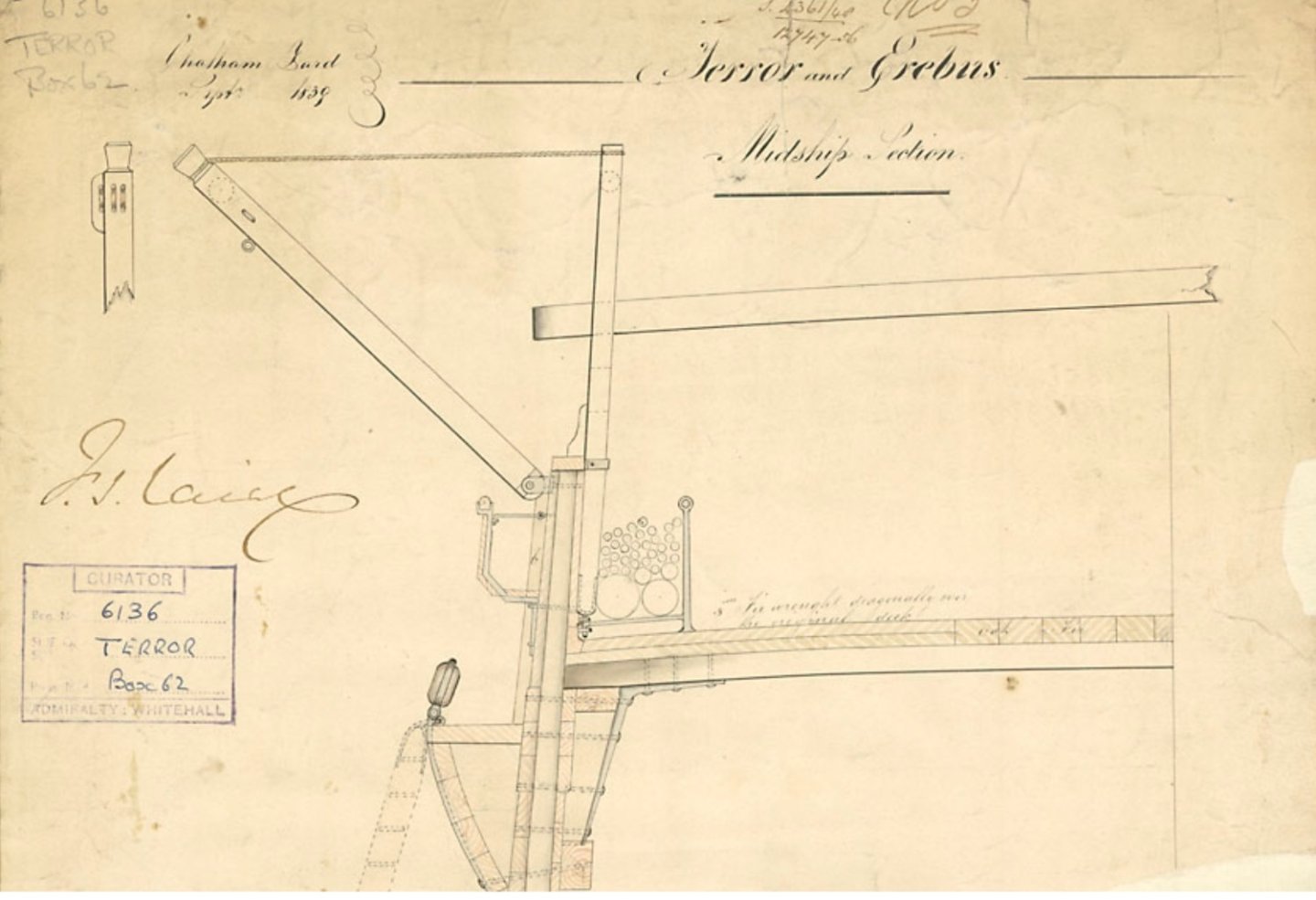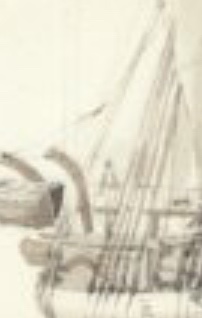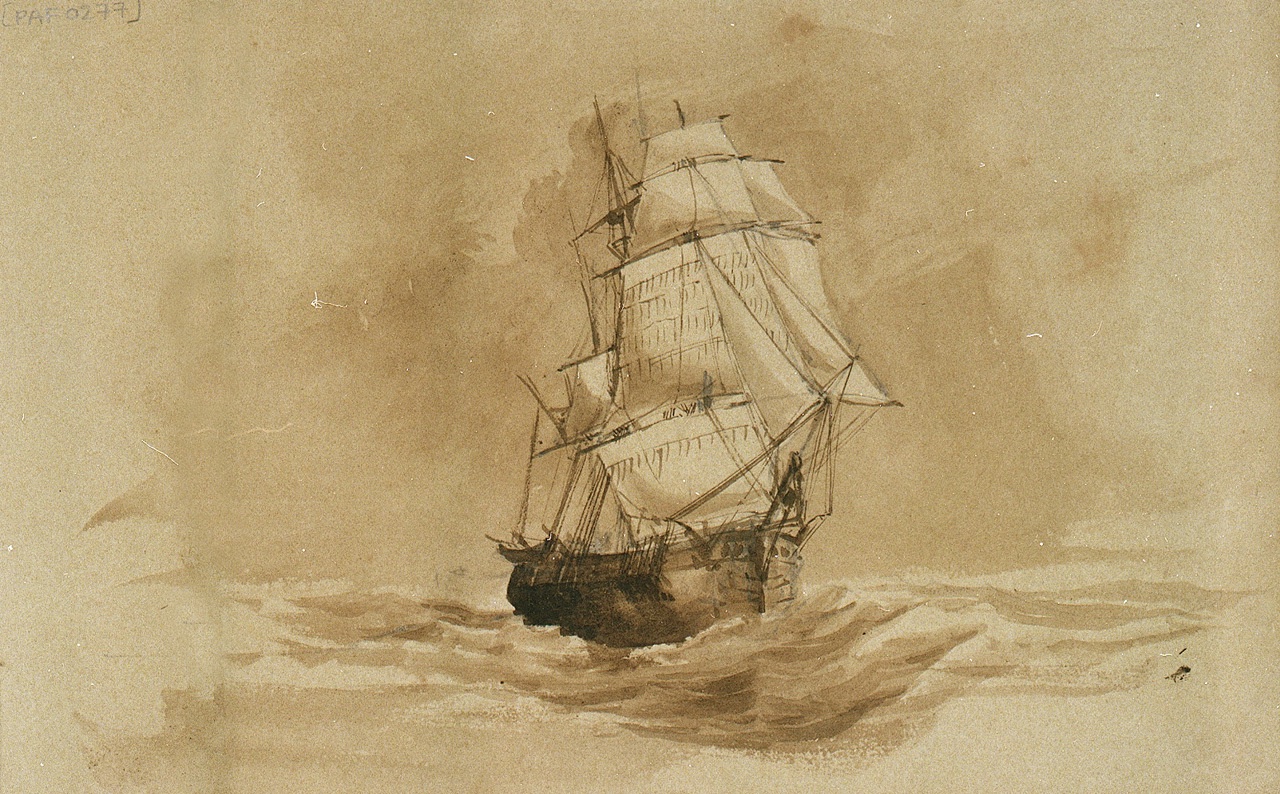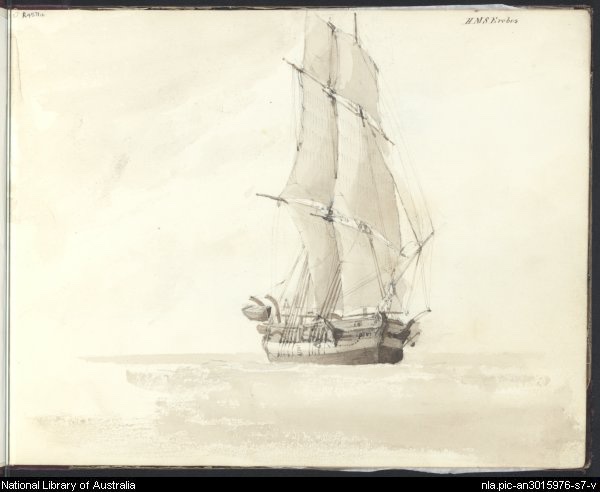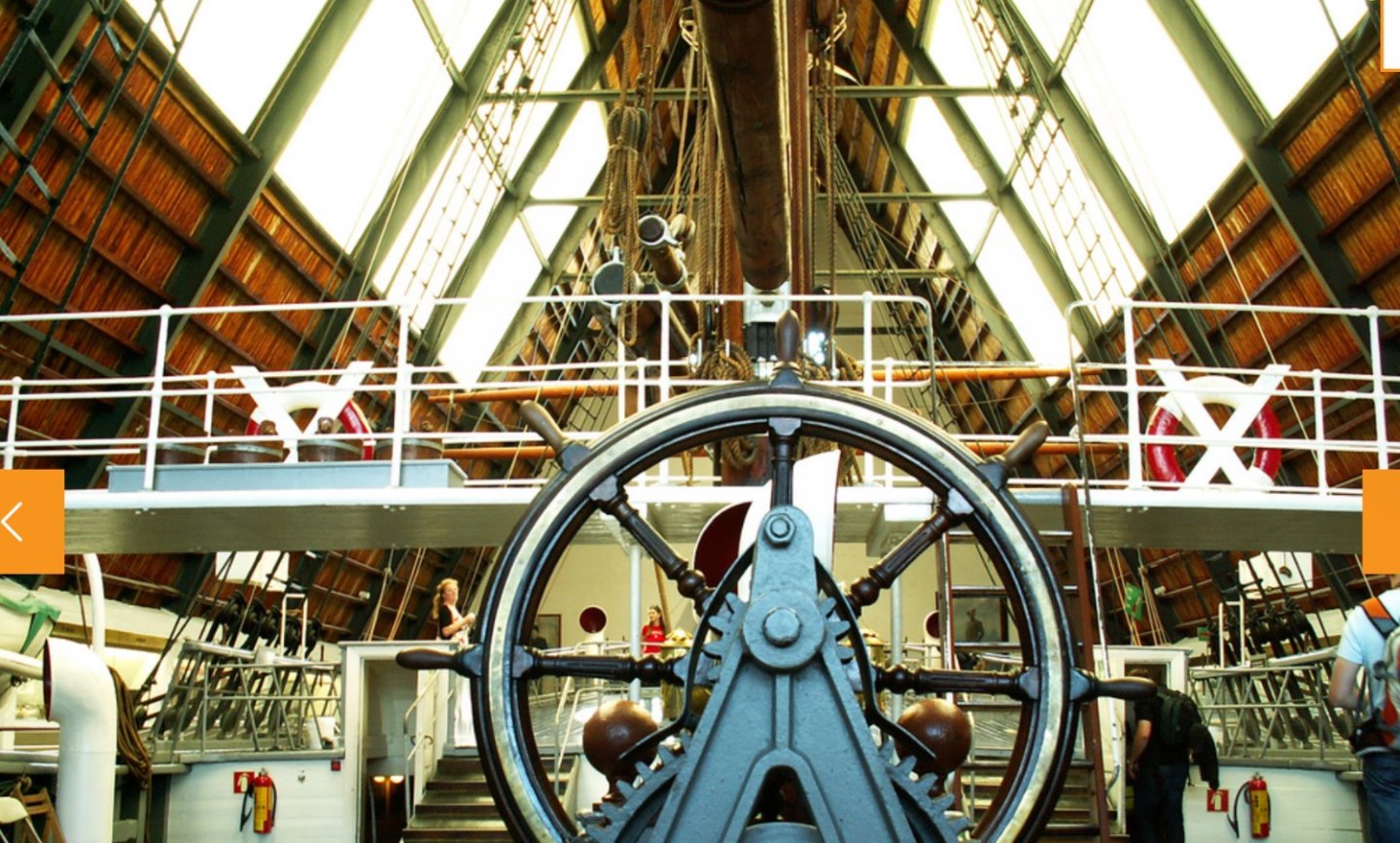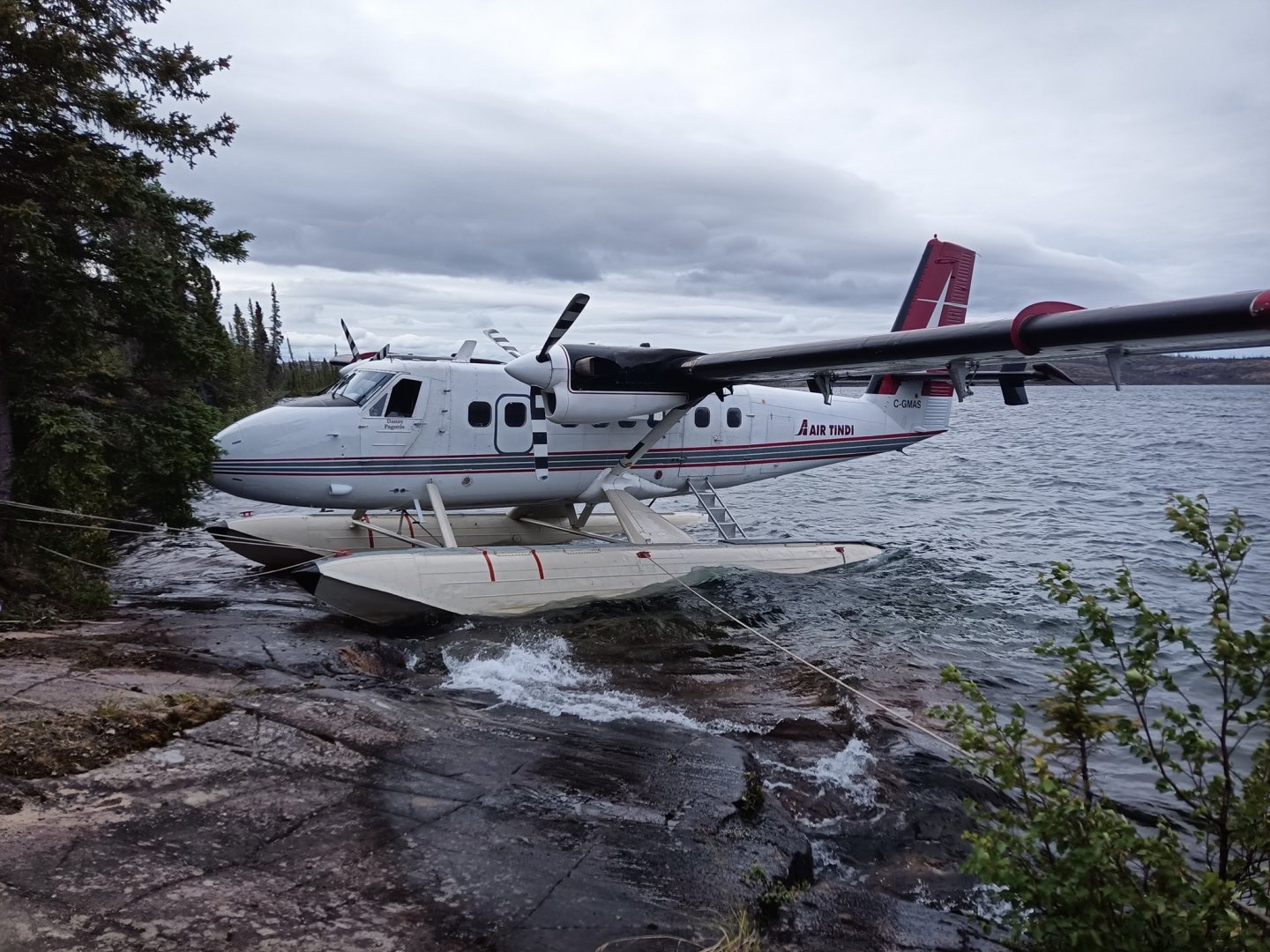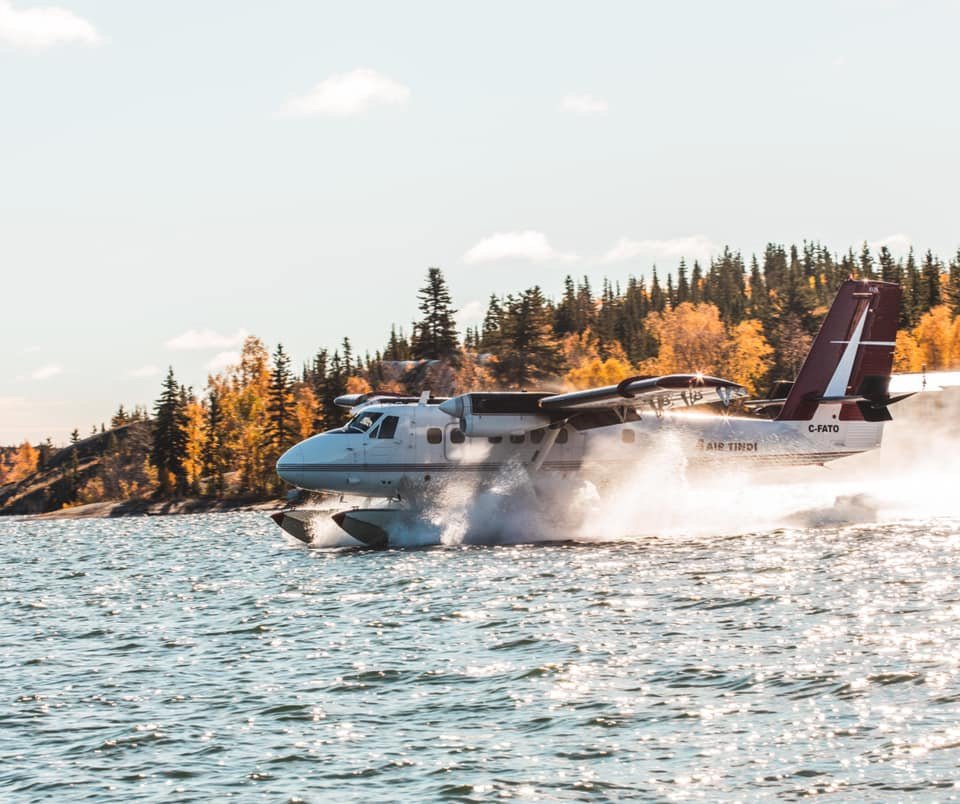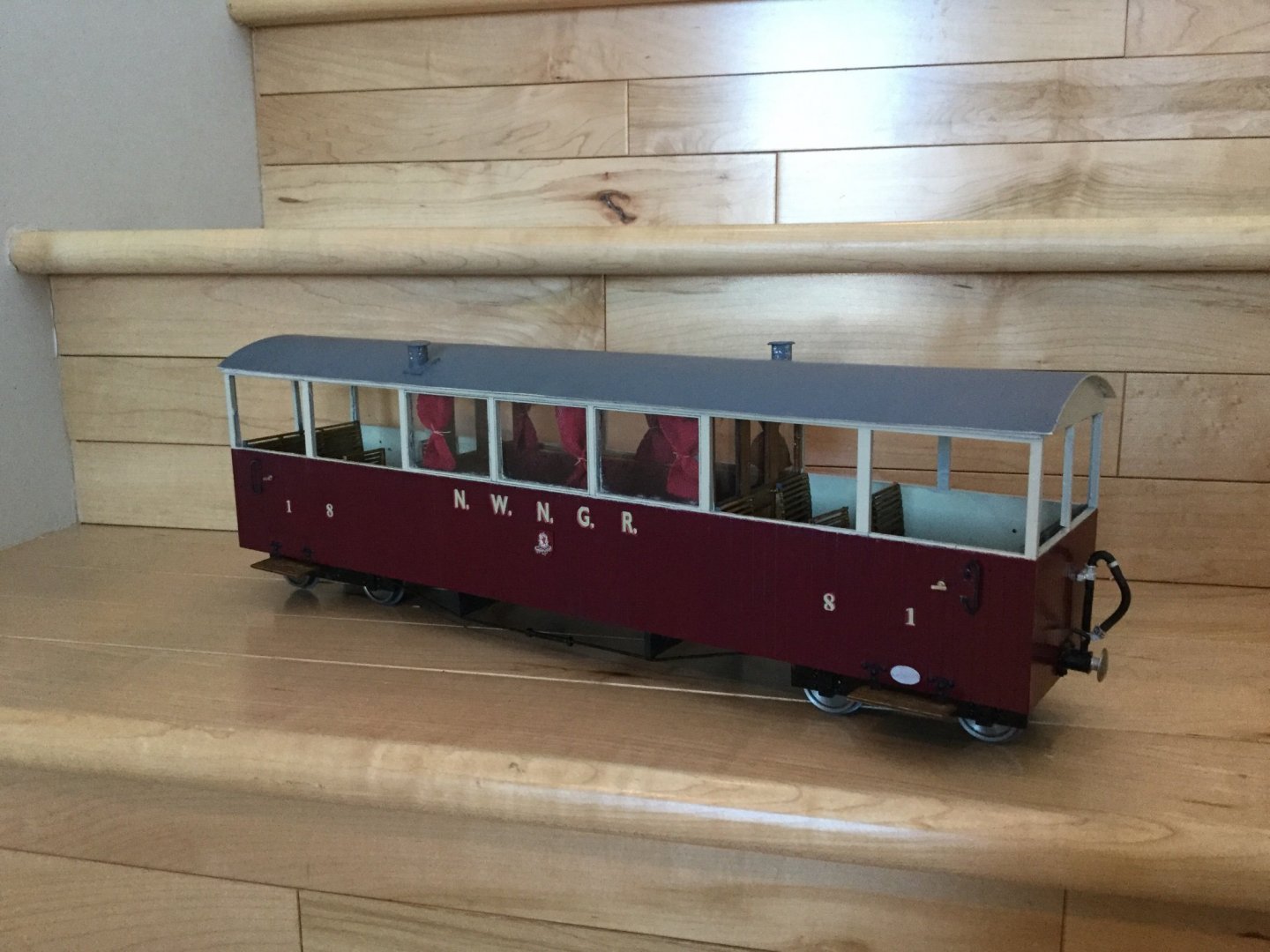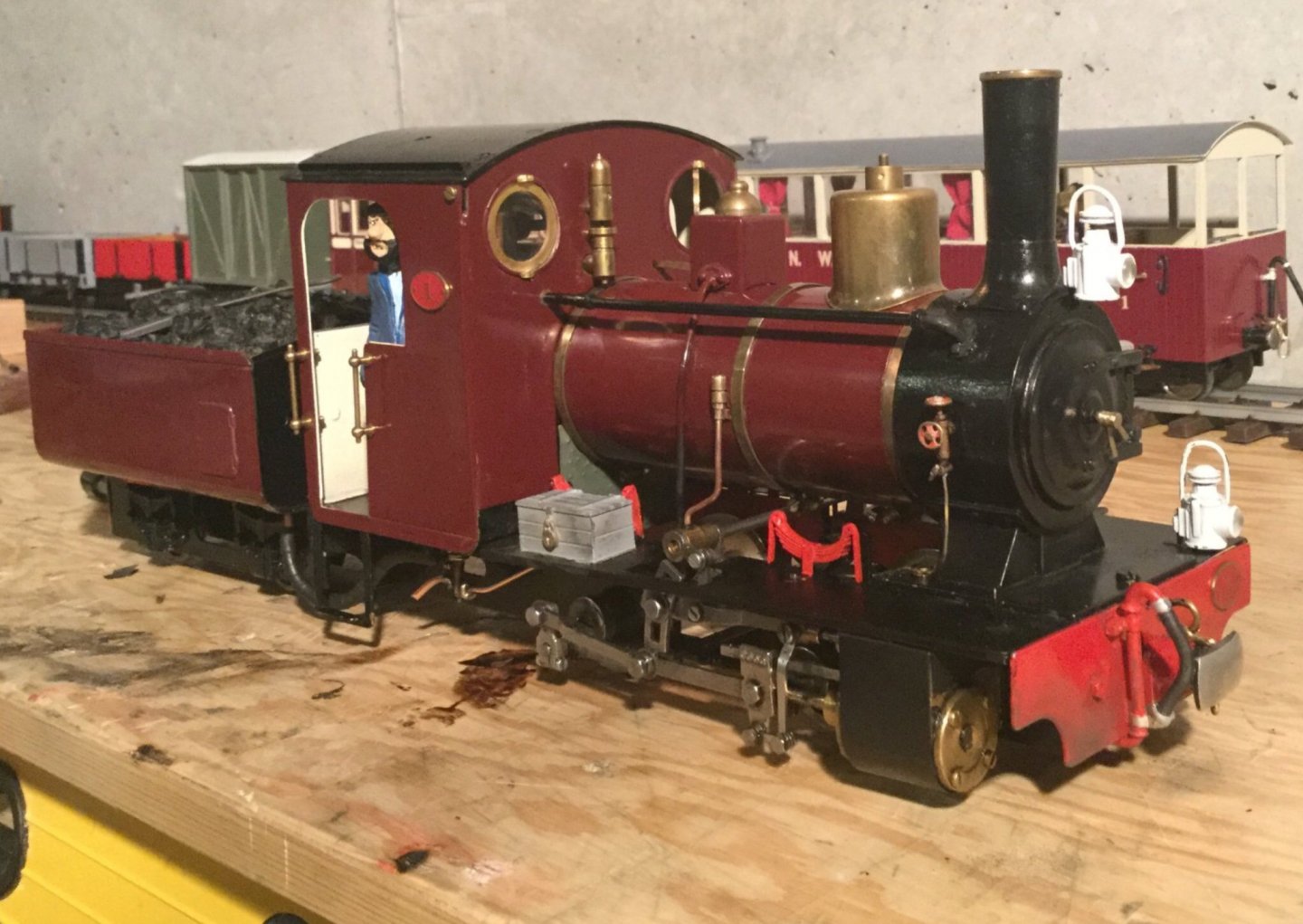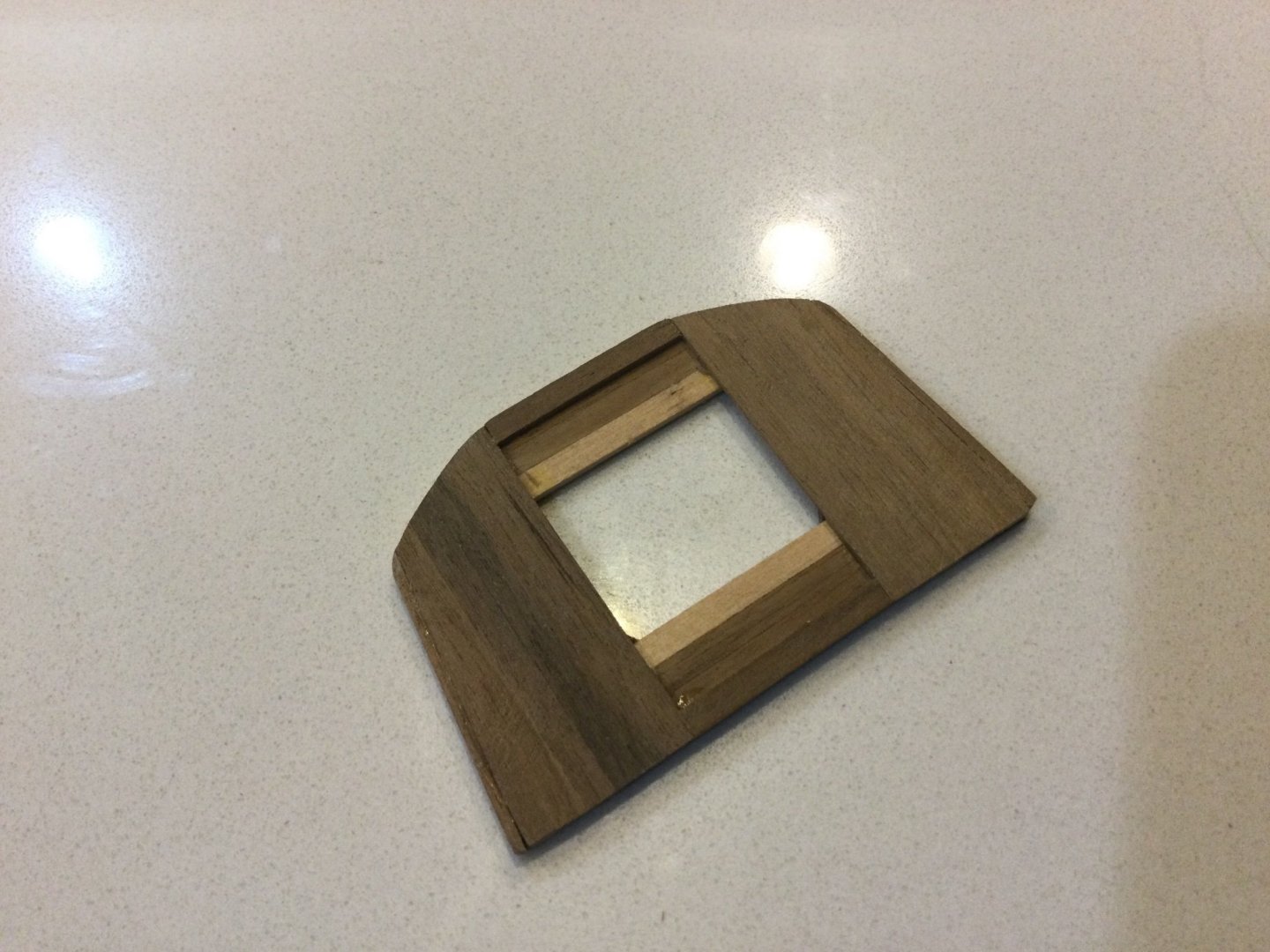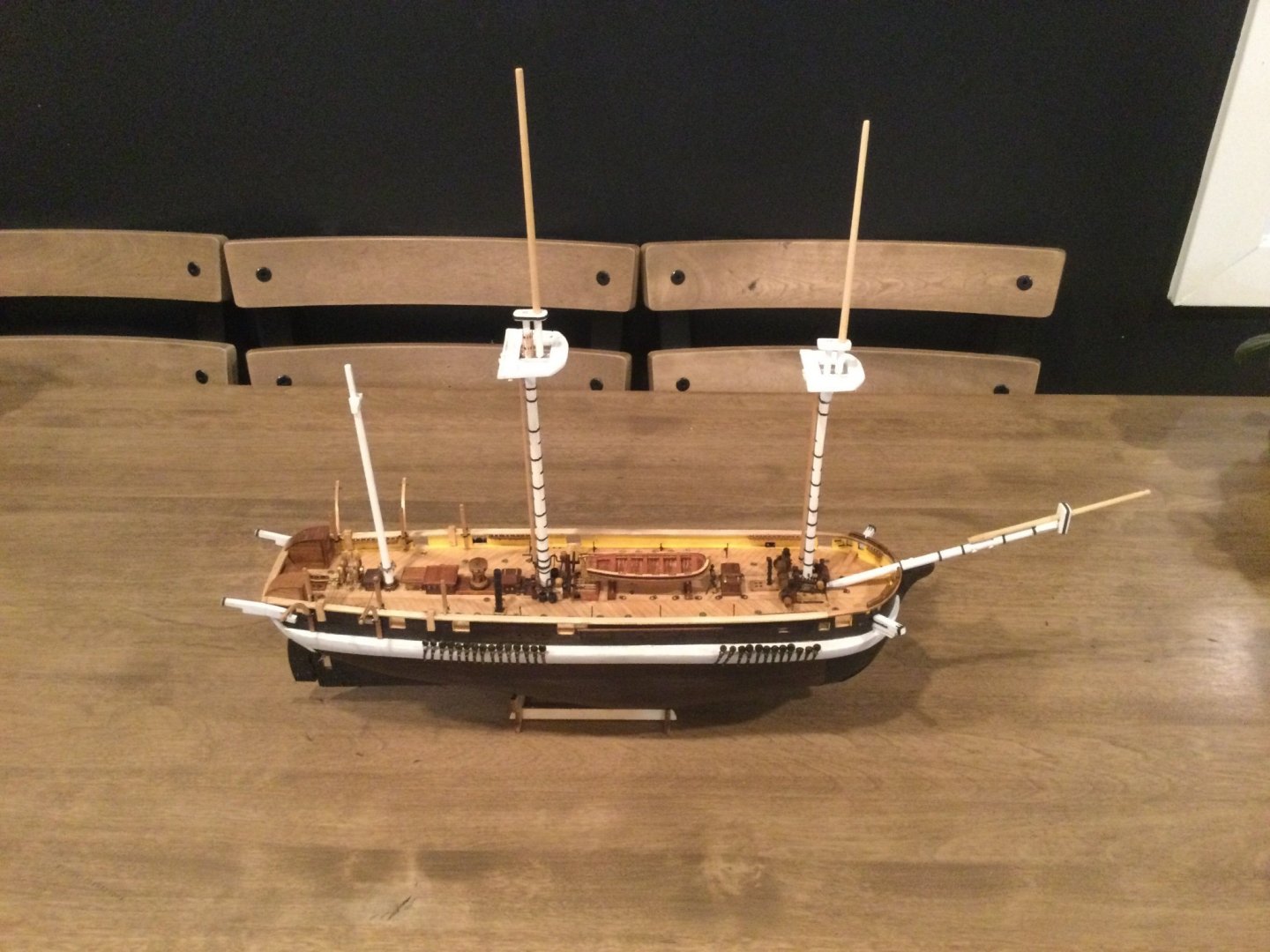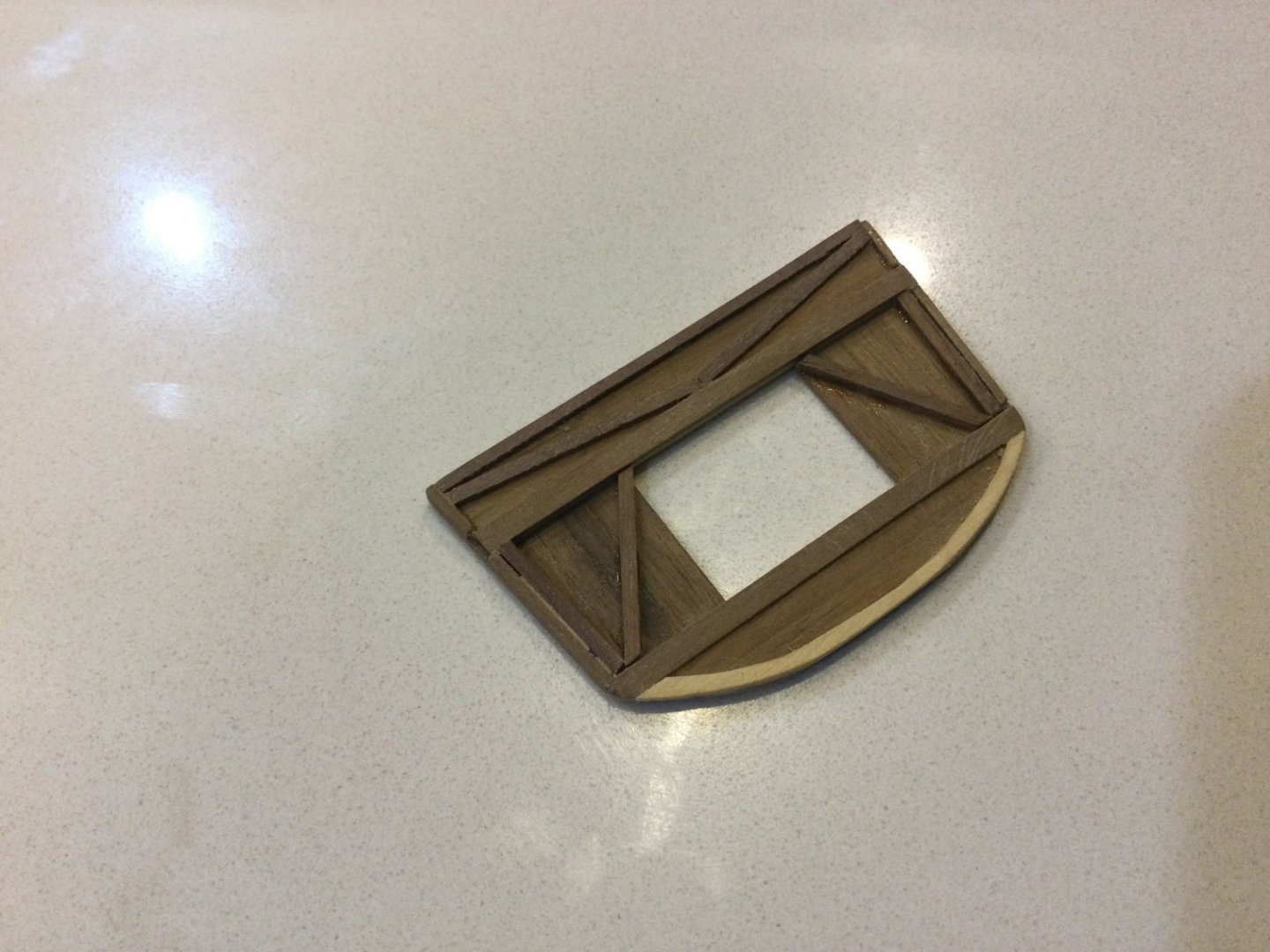
Keith S
Members-
Posts
339 -
Joined
-
Last visited
Content Type
Profiles
Forums
Gallery
Events
Everything posted by Keith S
-
The azimuth compass is a bit of kit that comes in a box and looks a bit like an old-fashioned pilot's astrocompass. That vertical post is likely one of a pair that sit on each side of he compass/map table. The beams and bridge being crowned on the original would make outboard AND inboard support necessary. The older drawings showing the skid beam are consistent with the beam being supported by brackets on the davit posts, and I would say Keith (other Keith) has got it right on his model, except the forward supports on the aft skid beam (if that makes sense) I think are outboard of the gunwale. Generally, on the side-drawing you are referencing (I have a full size photocopy of the original), anything in black ink is outboard of the bulwarks, and red ink is inboard.
-
Keith, don't forget this picture, which not only depicts the bridge being rather hefty, but depicts is as being crowned, (like the deck ought to be ) Edit: mind you this must be an older picture, since it shows the older style of straight davit. Hurrah for MORE ambiguity!!
-
That is nice of you both to say. My favourite bit so far on my model, I left the W/C door half open on the starboard aft deck enclosure, because that's the way it is standing on the actual wreck. The "Terror" just kind of sucks you in once you start doing research. As my first ship model, I had intended to build it just like the plans said. But I started by trying to do more realistic planking, then started doing research, then an archaeologist friend said "I can maybe help you fix some things on that kit to make it more realistic" and off I went. I live in subarctic Canada, and the fate or the Franklin expedition continues to weigh heavily on our minds. I live two streets over from Franklin Avenue, and my friends' kids go to Sir John Franklin secondary school. It's one of Canada's most enduring mysteries. Our last Prime Minister (before this one) made it part of his life's work to find the wrecks, and shortly after he left office, we did! Right after I started building my model in fact. For me, there is no choice but to do the best model I can of this iconic ship.
-
...or towards building sledges and tent-frames during the subsequent survival efforts... or into the furnace of the ship's heating-system. That is something we will never know. There is even a possibility that you are absolutely correct, because it now seems as though the Terror was moved, not by the vagaries of wind and current, but by artifice, into her resting-place in Terror bay. Perhaps the steam-engine was used. Interestingly a recent DNA analysis of the very few bones found indicate they were the remains of the engineer.
-
Well Allan, I respect your opinion, but you must realize that some people want a specific ship, and buy the only kit available. And don't know enough about ship kits to question the way it's designed. And then, like I did, do the research necessary to bring the kit up to standard. If you look at the versions of this kit built by Clearway, Daniel and myself, you'll see we did "put in the work" as you point out. But I maintain that it takes more skill to do so than it does just to follow the plans.
-
No mate, you are not out of line. No-one would think you're out of line by making helpful observations. Please continue to do so.
-
It's going to be fine. I am impressed with how you modified the stern so it looks the same as the real "Terror". I did not do that, while Clearway (one of the three main Keiths) took the plunge and his model is the best one here. I was too timid because it was my first model. I didn't think it would matter. But now I've become passionate about realism and I slightly regret not altering the stern on mine. Don't worry too much about the quality of the Occre kit. A lot of the advice you're getting will be from guys who have built a few models before. You can do this. Have a look at my build (I haven't worked on it in a while) and Daniel's, and Clearway's. We have all been helping each other do research on what the real ship looked like. Plus, now there is Dr. Matthew Betts' book you can use as reference. You can do as much or as little scratch-building as you like. We can all give you measurements when you get stuck. We have books with correct dimensions for Royal Navy rigs. Nothing is a secret. Your hull is doing just fine. There are manufacturers who have varying levels of quality, but there are also different TYPES of models. This one has thicker shaping planks to give the hull form, and veneer ones to make it look planked. It's not the kind of hull that has scale planking. That type of model is more advanced and requires more skill. The kind you are building can still give a fine model. Also, yes there are manufacturers who make better quality kits. But sometimes we choose the SHIP we want, not the manufacturer. We may have to tolerate a lower quality kit in order to get the ship we want (unless we are building from scratch). Keep going. You will do alright.
-
Well, somewhere there is an account of how Erebus and Terror stopped off somewhere on the Thames after their big refits to have the compasses calibrated, and I seem to remember reading each ship had two. I could never work out where they were, though.
-
Almost all the shipyard pictures, and Matthew Betts' drawings show the outline from above; it looks like a big ice-lolly stick, ha ha. But I'll post this picture again: I never noticed at first until I was specifically looking for it. But now I can see the bridge, as well as a man standing on it! This picture is from Australian archives, and I'm not sure which era of the ship's life it's from! I blew up the part I'm talking about. Tell me that's not a man standing on a bridge. Maybe it would be a good place for a binnacle. There doesn't seem to be anywhere else to put one, other than a portable one on the top of the aft skylight.
-
Keith B I think your reasoning is sound, although I won't be including an engine-room telegraph. The Fram doesn't have one, and I think it probably would have been sufficient on Terror to just bawl orders down the skylight. She only went three knots at full chat. There remains the fact that the bridge is called the "ice bridge" on the drawings, but I'm pretty sure that's because the engine was primarily intended for use in the pack ice, and I had the same thoughts as you regarding steamers having a flying bridge while pure sailing ships didn't. This ship existed right at the threshold of an incredible leap in ship design, which makes a lot of common-sense assumptions a bit more risky than otherwise. Ultimately I agree with you and have always planned to include the bridge on my model. Other Keith, I don't know that you would necessarily need to demolish anything to carefully stick a couple of gaffs in there. You might not be able to fully rig them with trysail masts but with sails furled or struck altogether all you really need are some peak and throat halyards leading to another set of little blocks under the tops. Just something to think about: on the other hand there is such a forest of rigging, it's not going to be noticeable one way or the other. One of the reasons I haven't made any progress on rigging is that I'm scared to death of it. Also, I agree. Isn't it nice to have so many Keiths all working together!
-
Keith, you're right, it's a flying bridge. However, in some plan views of the Erebus and Terror, it's referred to as an "Ice Bridge". There was an officer aboard whose role was defined as "ice master" and whose job was to con the ship through ice floes and pack ice. The fact that the bridge is called the "Ice Bridge" makes it seem to me that it was intended for the exclusive use of the Ice Master. This may lead one to believe it was removeable, as it doesn't seem as though a flying bridge was standard equipment on Royal Navy ships of that era. Plus, it is not visible on the very few drawings we have seen by artists who were sketching first-hand as the ships made their way across the North Atlantic prior to entering the straights. It may very well be that it was not removable... we simply don't know. But drawings of the ships, and of similar ships, don't seem to show a permanently-installed bridge. On my model, I have decided to depict her as she would have looked steaming through pack-ice, with her sails hastily furled and the chimney and screw in place. Therefore, I will certainly be installing the ice bridge. But it's not unreasonable to assume it was removable, because it is not depicted in a lot of drawings of the ships, nor is it always depicted in the Royal Navy draughts I have. There's always the possibility of its being "omitted for clarity" however. The fact is, I just don't know. Also, in a lot of draughts it's just shown as an outline, with no real details. Here are two drawings. In one, it seems to depict a flying bridge with a man on it. In the other, it is not depicted. I suppose the only reason to believe it's a removable structure is the fact it's referred to as the "ice bridge" in some drawings. Also, the beams upon which they stored their many boats would seem in some drawings to interfere with the bridge, or at least make it unuseable. Also, it doesn't appear in any of the wreck photos, which you would think it would if it was a permanent thing. But on the other hand, Parks Canada has been annoyingly parsimonious with their photographs. I think it's pretty safe to say that this bridge was a feature of these ships and ought to be included. It's just a bit weird that so little detail of it or its supporting structure are depicted in contemporary drawings and plans. There's a picture which depicts it as hanging WAY over the side, and others that depict it being a normal length. Some depict it as being flat; others depict it being curved. It's just like everything else on this boat: A GREAT BIG MYSTERY.
-
If you want my opinion, Keith (and as you know my model already has the trysail masts fitted) the fore-and-aft sails in the later years of sail were pretty much essential kit. I believe that on many points of sail, the fore-and-aft rig was used instead of rather than as well as the square rig. I can't see them being omitted, especially taking into account the extremely limited fuel reserves they carried for the steam-engine. Back then, improvements to sail rigging were considered to be high-tech, while the steam engine, as we know, was experimental and even Capt. Crozier was of the opinion that it wouldn't do him any good (referencing a letter he wrote to his nephew on the subject). I am building my ship to look as though she is proceeding under steam, with all sails messily furled. On yours, if you do the fore-and-aft rig, I would consider depicting it with the trysails furled since you have the square sails flying. I don't have any recommendation about the studding-sails but the irons you made for your Victory are so nice it would be shame not to include them on your Terror, although it's conceivable they would have removed and stowed the booms themselves. I was able to visit the Polar ship "Fram" recently, and while that ship is half a century more modern, she has an ice bridge in almost the same location. (just aft of the mizzen, instead of before it) There is no helm control; it's simply a bridge, so I think it's got to be pretty much the same idea as what was fitted to Terror. It is a curved and planked structure, similar to a deck only with the planks being laid athwartships. I idiotically didn't take any pictures of it, although my friend might have (I will check). Here is a picture of of it I took from the internet. You can see how it follows the crowned shape of the deck (which our models unfortunately don't have) and is made of planks. There are four iron stanchions in the middle holding it above the deck, with shorter iron stanchions supporting it from the rails. (From the "Terror" drawings, I think it might be appropriate to use turned wooden stanchions in the centre, and it looks as though it is at least partially supported by the davits as well). The "Fram" is a very trustworthy source of information, because unlike many museum ships, she was drydocked and roofed over for the museum almost immediately after having returned from a voyage. She is exactly the way she looked back when she last sailed, and hasn't been subjected to "interpretation" by non-sailing museum staff (or if she has: it's been minimal)
-
Hi guys, sorry for the protracted absence and lack of comments on your models. I am not waiting for Dr. Betts' book; I feel I have all the information I need to complete the model, and when I get working on it again I will continue to post progress pictures. The real issue is simply lack of relaxing model-building time and the need for a break. Last year I decided that I would step away from it for a while because I was getting a bit obsessed with it. You might say the thing I'm really waiting for is for the Canadian government to resume exploration of the real ship. On my model, there are a few details I've taken directly from photographs of the real ship sitting on the bottom, and if it wasn't for the accursed plague I'm sure we would have many more. Also, for the last several months I have been in a training situation at my job that hasn't left a lot of time for hobbies. I think I've been inside my hobby-building space about four times since last summer, just to nip in to get a pair of pliers or whatever. I'm expecting to get going on the model again soon. Just waiting until I feel like it, which hasn't happened yet. Ironically, I came about a mile and a half from the actual Terror yesterday, vertically. I flew over the site which lies on a direct track from Gjoa Haven to Talurjuak, Nunavut. As you might imagine there is nothing to see, just wind-swept and drift-strewn white ice and black rocks as far as the eye can see in any direction. Funny to think of all that lies beneath. I also flew right over Chantrey Inlet, the outlet of the Back River, on my way back home. Some folk think the remnants of the expedition made it this far, perhaps farther. Nevertheless it took me three hours at a speed of two hundred and twenty knots to make my way back to Yellowknife, on Great Slave Lake, which is where they were all headed. Looking down from above, I wondered how in the world they thought they could have made it. It's late April now and the land shows no sign of emerging from the depths of winter. Anyway, thanks for thinking about me guys, and I will be back with my model soon.
-
Gregory did a better job of explaining what I meant. But picture this: the sail (let's say a jibsail) is down. To hoist it up, you grab the appropriate rope and start pulling. As you pull, you end up with more and more rope in your hands. Now the sail is up, and you need to tie the rope off to the belaying pin and coil it up. Later when the sail goes down again, all that rope disappears up into the rigging. So a ship with her sails UP is going to have a lot more rope coiled up on the pins than she would if the sails were down.
-
Hi Rob, with respect to the belaying pins: You've decided to make the ship with her sails and yards hoisted, so it would seem logical that there will be lots of rope coiled about. Because of course the sailors will have pulled all those ropes to get the sails up. If the sails and yards were down, then there would be more rope up in the rigging and less on deck, if you see what I mean. Looking at your model, I feel a bit annoyed when I compare your kit to the one Occre makes for the "Terror". The guys here who are building that kit, including me, have been examining plans and old drawings, trying to work out where all the winch-drums, deck pumps, deck houses, pin-rails, trysail masts, et cetera, were supposed to go, because the kit doesn't include any of these things. Every bit of extra detail we have included is the result of hours of poring over old Navy draughts and reading Lees' book about rigging, because the "Terror" kit comes with what amounts to a basic 18-century "pirate ship" caricature of a rig that is totally inappropriate to her era. Now I see the same company puts out this excellent kit of the "Beagle" with all these details, and a proper rig. Honestly the "Terror" kit was a rush job to capitalize on the enthusiasm from the AMC series, and is nowhere near as nice as your "Beagle" kit. Especially annoying for me as a first-time model builder. Sorry for the rant. You're doing a great job on this kit.
-
Hi guys, thanks for checking in. Everything is fine here. My model-building is interrupted every year by the "Summer" here, which is short and brutal. I would not be able to forgive myself if I spent any of it in my basement lair instead of being outside, or at least being upstairs where I can see the sun. I live very far north and work as a "bush" pilot, which means 24- hour sunlight and 12-14 hour working days while my work- aeroplane is on floats. I also have a neglected "real" sailboat that needs attention when I'm not either working or sleeping. Currently I am busy getting ready for winter and clearing my tools out of the garage so my wife's car will fit in there. Then I can get ready to pull "Terror" off the shelf in the lounge (my wife tolerates the model being on display because it's not an aeroplane) and get working on her again. My model-building is always like this. I take twice as long as anyone else. One time it took me three years to build a basic balsa-and-tissue model plane. Thank you for your well-wishes though- I appreciate it; and I will be posting more progress pictures soon.
- 206 replies
-
They are a pain, but it's also really cool the way they fit together. I'm not making quite as many as you, because I am going to use the two smaller canoe-sterned whaleboats from the kit. They will be upside-down, so the lack of detail underneath won't be visible. I'm using a model shipways kit to build the largest boat. It's built up pretty much the same way as the Master Korabel ones, except the planks need to be tapered and shaped by hand- they are not laser-cut. What I'm going to do is build it at the same time as a MK one, and copy the general shape of the strakes. I will end up with four Master Korabel ones, the Model Shipways one, and the two smaller whaleboats, which only adds up to seven, but I will be thoroughly sick of boats by then!
-
Is that the Master Korabel model boat? If so, nice job. It's tricky. I wish I had built one before I started building the main ship. Originally I wanted to discard the kit planking and try to make mine more realistic. But I couldn't make heads or tails of all the "Spiling" and "stealers" and stuff, and I didn't want to use my model as a guinea-pig. I did sort of a half-*** job tapering my "Terror" planks but it was hard graft. Once I built the Master Korabel boat, I had a much better idea of what the shape of a garboard strake would look like, and the way planks are tapered and curved. It's just like a model ship, but in ultra-miniature. I've two more medium sized ones to go, plus a smaller one to use as the gig, plus a "model shipways" larger one, which will be the barge, which goes together the same way but does not have pre-formed strakes. I will be building small boats for at least the whole of winter. I don't work on my model in the short Summer we get here, and I am anticipating at least another year till she is finished, or even as near finished as Other Keith's.
-
I haven't done much work on my Terror this summer. The season is simply too short here, and even if the weather isn't the greatest, it's a shame to spend time working on indoor hobbies while it's even remotely habitable outside. As for your other pictures: I love British steam trains. I even built one several winters ago. It turns out I will build a model of literally anything.
-
HMS Terror by Icksa - OcCre - 1:75
Keith S replied to Icksa's topic in - Kit build logs for subjects built from 1801 - 1850
Are you building the model in natural wood colours like Clearway, or painted? -
This time I photographed the top BEFORE globbering it up with paint, more or less so I can show how I built it up using planks imitation of how the real one may have been built up. I read somewhere (probably Lees') that around about this time the Royal Navy authorized the tops to be built up in two parts, to be assembled aloft. This makes some sense, as it's basically two "leaves" with the cross-members bolted into position and pinched between the crosstrees and a set of upper sister-crosstrees. Of course I glued them because tiny bolts are not feasible. Later, I will add blackened pin-heads and "iron" (black paper) reinforcements per the original, which hopefully will make them look better, as I still do not like the white paint. I've also worked on the sprit and jib-boom, adding bees, cleats and iron banding around the cap.
- 206 replies
-
Observant! Yeah I cut the fore topmast, and was looking for a place to put it where it wouldn't get mixed up with all the other little bits of dowel I've got lying about. Seemed like the sensible place to store it till I get around to mounting it! You're right, once the spars begin to be built up, the model build seems to accelerate, doesn't it? Although I still have things to build on the hull: Kevels and mooring bitts and more chainplates primarily.
- 206 replies
About us
Modelshipworld - Advancing Ship Modeling through Research
SSL Secured
Your security is important for us so this Website is SSL-Secured
NRG Mailing Address
Nautical Research Guild
237 South Lincoln Street
Westmont IL, 60559-1917
Model Ship World ® and the MSW logo are Registered Trademarks, and belong to the Nautical Research Guild (United States Patent and Trademark Office: No. 6,929,264 & No. 6,929,274, registered Dec. 20, 2022)
Helpful Links
About the NRG
If you enjoy building ship models that are historically accurate as well as beautiful, then The Nautical Research Guild (NRG) is just right for you.
The Guild is a non-profit educational organization whose mission is to “Advance Ship Modeling Through Research”. We provide support to our members in their efforts to raise the quality of their model ships.
The Nautical Research Guild has published our world-renowned quarterly magazine, The Nautical Research Journal, since 1955. The pages of the Journal are full of articles by accomplished ship modelers who show you how they create those exquisite details on their models, and by maritime historians who show you the correct details to build. The Journal is available in both print and digital editions. Go to the NRG web site (www.thenrg.org) to download a complimentary digital copy of the Journal. The NRG also publishes plan sets, books and compilations of back issues of the Journal and the former Ships in Scale and Model Ship Builder magazines.


